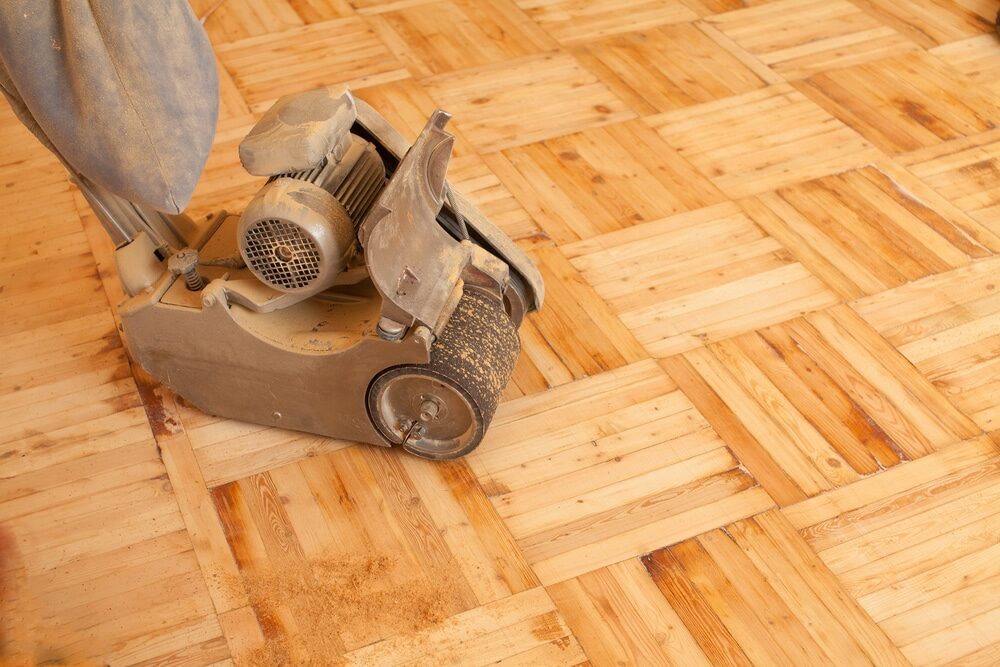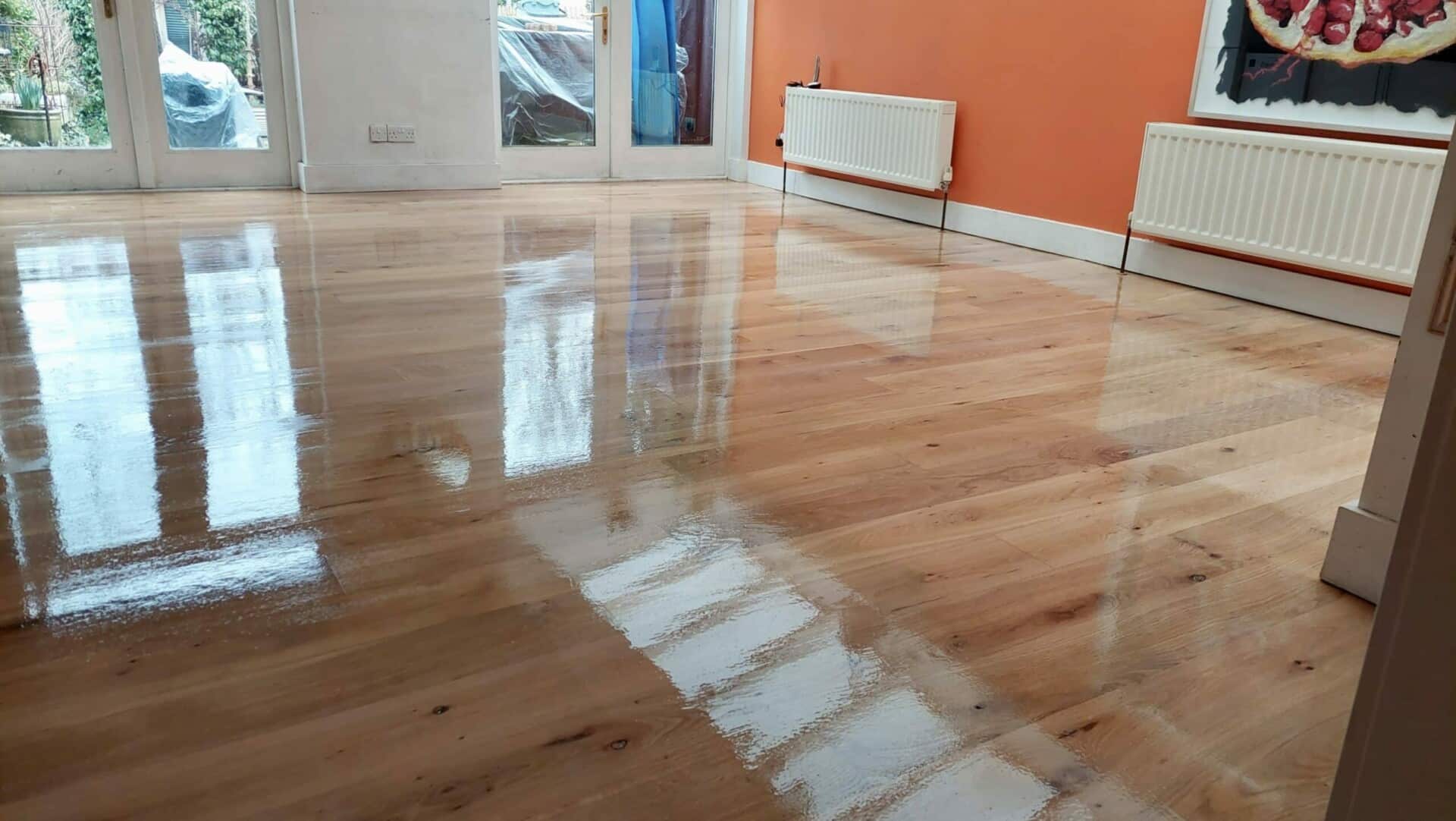London:
Nationwide:
Mastering the Wood Floor Sanding Trade | Comprehensive Guide
Posted on July 22, 2023
Blog

The Need for Wood Floor Sanding
As wooden floors age, they can become scuffed, scratched, and dull. Years of foot traffic, moving furniture, and even sunlight can cause significant damage. When these signs of age and wear become noticeable, sanding and refinishing can renew the floor’s look and extend its life.Tools of the Trade
One cannot embark on the wood floor sanding trade without the necessary equipment. These are some of the tools commonly used in the industry:Belt Sander
A belt sander is essential for wood floor sanding. It’s used to remove old finishes and smooth out the wooden surface. Belt sanders come in a variety of sizes and strengths, enabling professionals to tackle different sizes of jobs.
Edger
An edger is a smaller tool used to sand areas the belt sander can’t reach, such as corners and edges. The edger is essential for ensuring an even, thorough sanding job.Buffer
Buffers are used in the final stages of the sanding process. They smooth out any remaining rough spots, ensuring a flawless finish.
Dustless Sanding Equipment
To reduce the amount of dust generated during the sanding process, professionals now use dustless sanding equipment. These machines are designed to collect dust as it’s produced, which not only makes the process cleaner but also safeguards the health of the workers and homeowners.Understanding the Wood Floor Sanding Process
The wood floor sanding process involves several critical steps:- Preparation: Before sanding begins, the room needs to be fully cleared of furniture, and any protruding nails or staples in the floor must be removed or hammered down.
- Rough Sanding: The first pass over the floor with the belt sander removes the old finish and levels the floor. This phase often requires several passes with progressively finer sandpaper.
- Detail Sanding: Once the main area of the floor has been sanded, an edger is used to reach corners and edges.
- Buffing: The floor is then buffed to remove any remaining rough spots and prepare the surface for the finish.
- Cleaning and Finishing: The floor is thoroughly cleaned to remove dust before the finish is applied.

The Skills Required in the Wood Floor Sanding Trade
This trade requires a blend of technical skills, physical strength, and aesthetic judgment. A professional sander needs to understand the properties of different types of wood and how they respond to sanding. They must be adept at operating various tools and able to judge when the floor is perfectly smooth. Physical stamina is also necessary, as the job requires extended periods of standing and manual labor.Training and Certification
For those interested in the wood floor sanding trade, training and certification can significantly enhance your skills and marketability. Several organizations offer courses and certifications, such as the National Wood Flooring Association (NWFA) in the U.S.The Business Side of Wood Floor Sanding
Running a successful wood floor sanding business requires more than just technical proficiency. You need to understand how to price your services competitively, manage your expenses, market your business effectively, and provide excellent customer service.Health and Safety
Working in the wood floor sanding trade carries potential risks, including exposure to dust and the physical demands of the job. Wearing appropriate safety equipment, such as dust masks, safety glasses, and knee pads, is crucial. In addition, the use of dustless sanding equipment can greatly reduce the health risks associated with wood dust.The Environmental Impact
Sanding and refinishing wooden floors is more environmentally friendly than replacing them. The process uses fewer resources and creates less waste. In addition, many professionals in the trade now use eco-friendly finishes and dustless sanding equipment, further reducing the environmental impact.The Future of Wood Floor Sanding
With the growing trend towards sustainability, the wood floor sanding trade is set to continue thriving. Advances in technology will continue to improve the tools of the trade, making the process cleaner, faster, and more efficient.Conclusion
The wood floor sanding trade is an essential part of maintaining the beauty and longevity of wooden floors. It’s a blend of art and science, requiring technical skills, physical stamina, and aesthetic judgment. As sustainability continues to be a focus for homeowners and businesses, this age-old trade is set to enjoy sustained demand, promising a rewarding career for those who choose to master its many facets.Some Useful Links:
- Floor Sanding Services
- School Floor Sanding
- Wood Floor Restorations
- Wood Floor Repairs
- Wood Floor Polishing
More from our Blog:
Pilang Hardwood: The Hidden Treasure for Flooring Choices Lapacho: Unveiling the Beauty of This Exotic Hardwood Parquet Flooring: Discovering a Universe of Patterns Wooden Floors: Trend Analysis | Style or Fad? Discover the Trend: Wooden Floors in Interior Design | Tropical Paradise Aesthetics
Sanding
We provide virtually dust-free sanding with our continuous belt machinery with mobile extraction units, giving you a safer environment for your family.
Oiling
This organic finish not only adds beauty to your home but also has exceptional water-repellent characteristics, making it easier to clean and maintain.
Waxing
This natural floor finish offers the softest and most mellow appearance – and leaves your floor able to breath.
Buffing
Using soft buffing machines (and hand-polishing where required) will bring a wonderful sheen to your newly-finished floor.
Repairs
We offer a full assessment of your wooden floors to determine what repairs are needed to provide the perfect working surface for the later stages of sanding, staining and sealing.
Restoration
We offer a comprehensive restoration process designed to address floors that are improperly fitted or damaged over time through wear and tear.
Request a fixed price quote for your wood floor restoration now
Simply enter your postcode below to get started.
Services
Wood Floor Sanding Wood Floor Restoration Wood Floor Scratch Repair Squeaky Wood Floor Repair Parquet Floor Sanding Parquet Floor Restoration Commercial Floor Sanding Church Floor Sanding Community Centre Floor Sanding School Floor Sanding Gap Filling Gap Filling with ResinCopyright © Mr Sander®
Privacy & Cookies Terms & Conditions Complaints Procedure Cancellation Rights Sitemap





